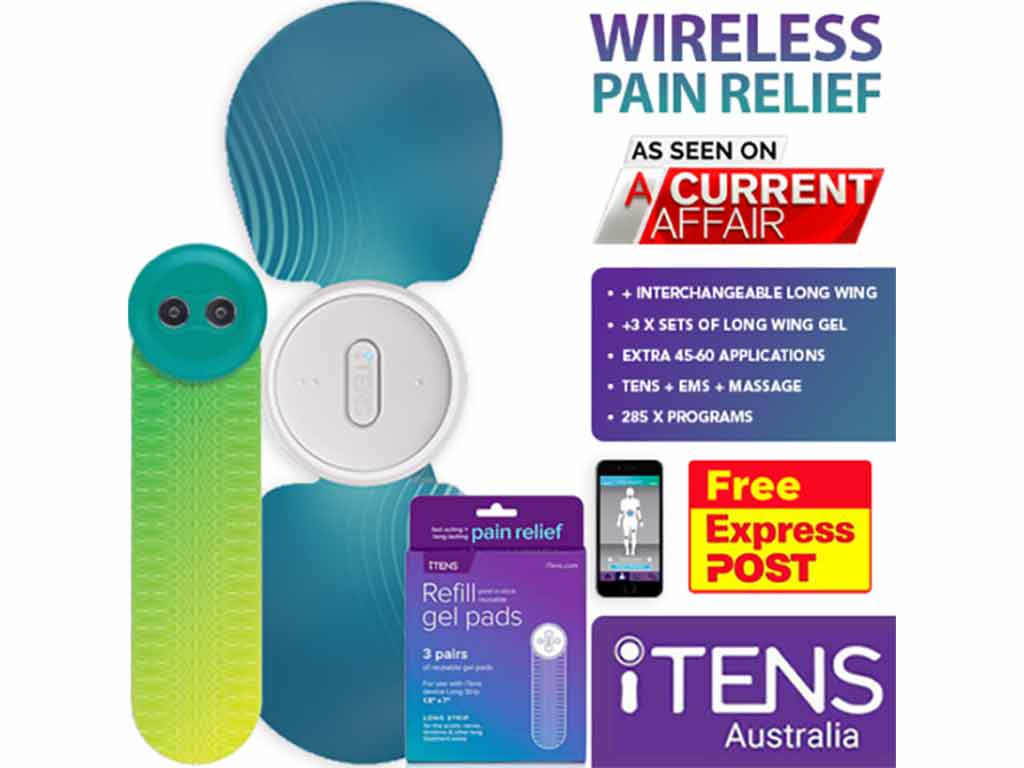
People may experience pain at different levels and at various times throughout life. Depending on the condition, some pain can be mild and tolerable, while others are excruciating. Individuals may use several pain management techniques to manage their symptoms. A cost-effective procedure that is increasing in demand is using a programmable TENS unit. It has many advantages over other pain relief methods, including being a non-intrusive, easy-to-use device and having no adverse side effects.
Transcutaneous Electrical Nerve Stimulation (TENS) is a type of therapy that uses low-voltage currents to relieve pain. It is widely used in therapy centres to manage chronic conditions and injuries. Moreover, people may use a portable device to treat pain at any time and in the comfort of their homes. It also comes in various styles and features. This article will provide information on the functions of TENS, its advantages, and features.
What is a Programmable TENS Unit?
A programmable TENS unit is a battery-powered device consisting of a signal generator and electrode pads. It emits small electrical pulses that flow from the electrodes to the skin. When the currents reach the sensory nerves, they stimulate the nervous system to control pain signals. Hence, the person may feel reduced pain after a few minutes. Additionally, the device has controls to adjust the strength of the currents according to a person’s pain level.
Pain relief through TENS is obtainable using various frequency ranges. A person with severe symptoms may use high frequency (50-120 Hz) to restrict pain signals. According to the Gate Control Theory of Pain, nerve bundles in the spinal cord act as gate controllers. Mild electrical currents are one of the factors that can induce the nerve pathways to close. At this level, it impedes the pain signals from reaching the brain.
On the other hand, a person may set a programmable TENS unit at a low frequency (2-10 Hz) to stimulate the body to produce more endorphins. Endorphins are natural painkilling chemicals that help a person feel better. They interact with nerve cells and inhibit them from sending out chemical messages. Moreover, it can give therapeutic relief for up to four hours. It is ideal for reducing chronic pain symptoms.
Understanding TENS Settings
A TENS machine may be set according to the following adjustments:
- Pulse rates (frequency) – the number of pulses in one second
- Pulse width (duration) – the length of time between each pulse
- Amplitude (intensity) – the strength of the currents. It ranges from mild to extreme pain.
- Pulse pattern – continuous, burst, or modulated

Benefits and Advantages of a Programmable TENS Unit
Using a programmable TENS unit for pain management offers several benefits compared to other methods. The first significant advantage is the ability to control pain relief. Users can modulate the frequency and intensity of the pulses to find the most effective results. Additionally, TENS is a natural form of pain treatment. Mild electrical pulses help activate the body’s innate defences against pain. Unlike medicines, it does not involve substances that may potentially develop side effects.
Moreover, a TENS machine utilises self-adhesive electrodes. The pads stick firmly but gently on the skin without leaving permanent marks. It is also non-invasive, as the electrodes do not penetrate the skin. Thus, it is a safe and convenient option for people who do not like intrusive or risky procedures like injections. Furthermore, TENS are lightweight devices. Wearing them does not get in the way of doing regular activities like work or being active.
Lastly, a programmable TENS unit has zero to little risks. Portable devices that are available over the counter have regulated stimulation levels. This allows individuals to self-administer the therapy without supervision. However, some people may experience slight discomfort while using the device. Some of the side effects are redness or irritation due to allergic reactions to the electrodes. When this occurs, turn off the device and remove the pads. Consult a doctor if the side effects do not subside.
Conditions Treated
TENS therapy helps relieve symptoms from the following:
Health conditions
- Arthritis
- Bursitis
- Carpal tunnel syndrome
- Chronic migraine
- Epicondylitis
- Fibromyalgia
- Plantar fasciitis
- Peripheral neuropathy
- Sciatica
- Tendinitis
Pain according to body regions
- Shoulder pain
- Knee pain
- Elbow pain
- Wrist/hand pain
- Abdominal and pelvic pain
- Back pain
- Leg pain
- Ankle/feet pain

Features of Programmable TENS Units
When looking for programmable TENS units, you will come across various types and styles of devices. However, they can be broadly categorised into two types – wired and wireless. The conventional units come with handheld controllers that have lead cables connecting to the electrode pads. In contrast, a wireless TENS unit does not feature any cords or cables. Instead, the electrodes connect to a smartphone through Bluetooth technology. Because of the absence of wires, they are more compact and comfortable.
An essential component of the TENS unit is the range of parameters and the number of programs. Pain management with TENS depends on the combination of pulse rates, pulse width, and intensity. Therefore, a wide range enables individuals to adjust the settings most beneficial for their pain relief. On the other hand, more treatment programs available means the more cost-efficient a device is. A person may use the machine for multiple pain conditions.
Typically, wireless programmable TENS units contain more programs than traditional wired devices. In particular, the iTENS from iTENS Australia integrates digital health technology to maximise the benefits of TENS therapy. Through a smartphone app, it is able to give multiple pre-set selections based on a specific condition. Users may quickly select a desired pain mode from the menu to start treatment. Furthermore, it eliminates the inconvenience of setting up the machine before use.
What to Expect During the Treatment
- When turned on, the device will feel mild tingling or prickling sensations.
- Increasing the intensity makes the tingling sensations stronger.
- Muscles may twitch slightly. However, it should not cause contractions.
- Some may feel pain relief immediately, while others may take longer.
- Prolonged use may cause skin irritations on the electrode site.
Conclusion
TENS therapy is a non-invasive and risk-free method of pain management. More people use a programmable TENS unit because of its efficiency in relieving pain symptoms. It uses mild electrical currents, which can be adjusted, to fit individual treatment needs. Unlike medicines, it does not have adverse side effects. Moreover, it can be used without interfering with regular activities. Therefore, it is suitable for frequent use. However, one session must not exceed one hour and a 20-minute break in between.
A TENS device comes in wired and wireless electrodes. Wireless TENS units offer hassle-free pain treatment because of quicker pad placement and user-friendly app features. It also maximises flexibility as there are no wires to restrict the range of motion. Additionally, TENS units are easy to use. People can self-administer the therapy following simple usage guidelines and safety measures. For best results, you may consult your physician or therapist. Wireless TENS are available at iTENS Australia online.







